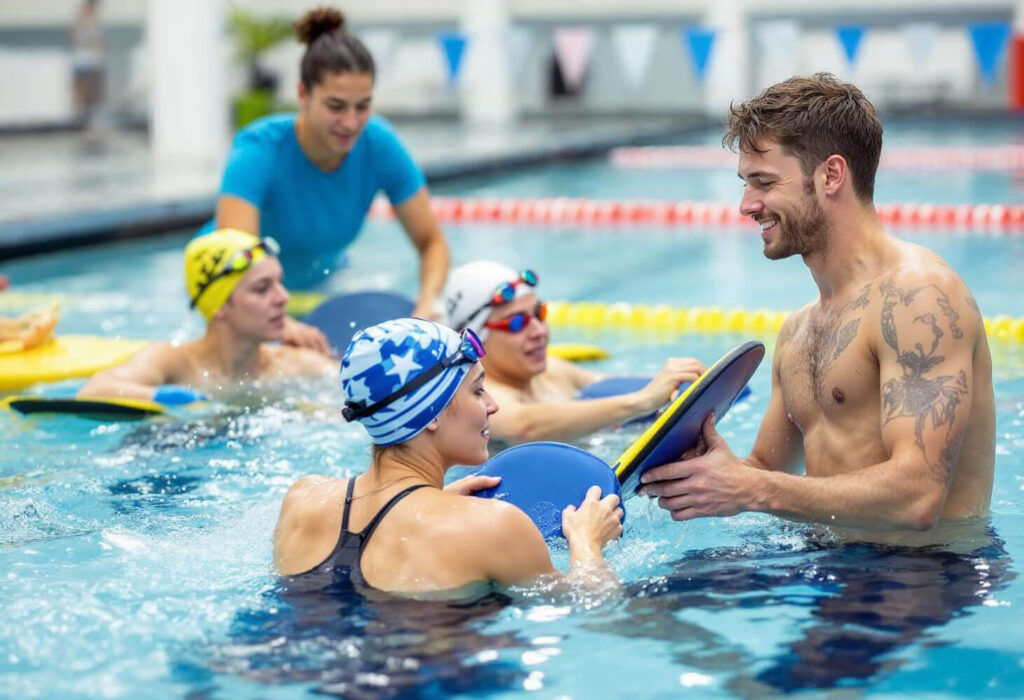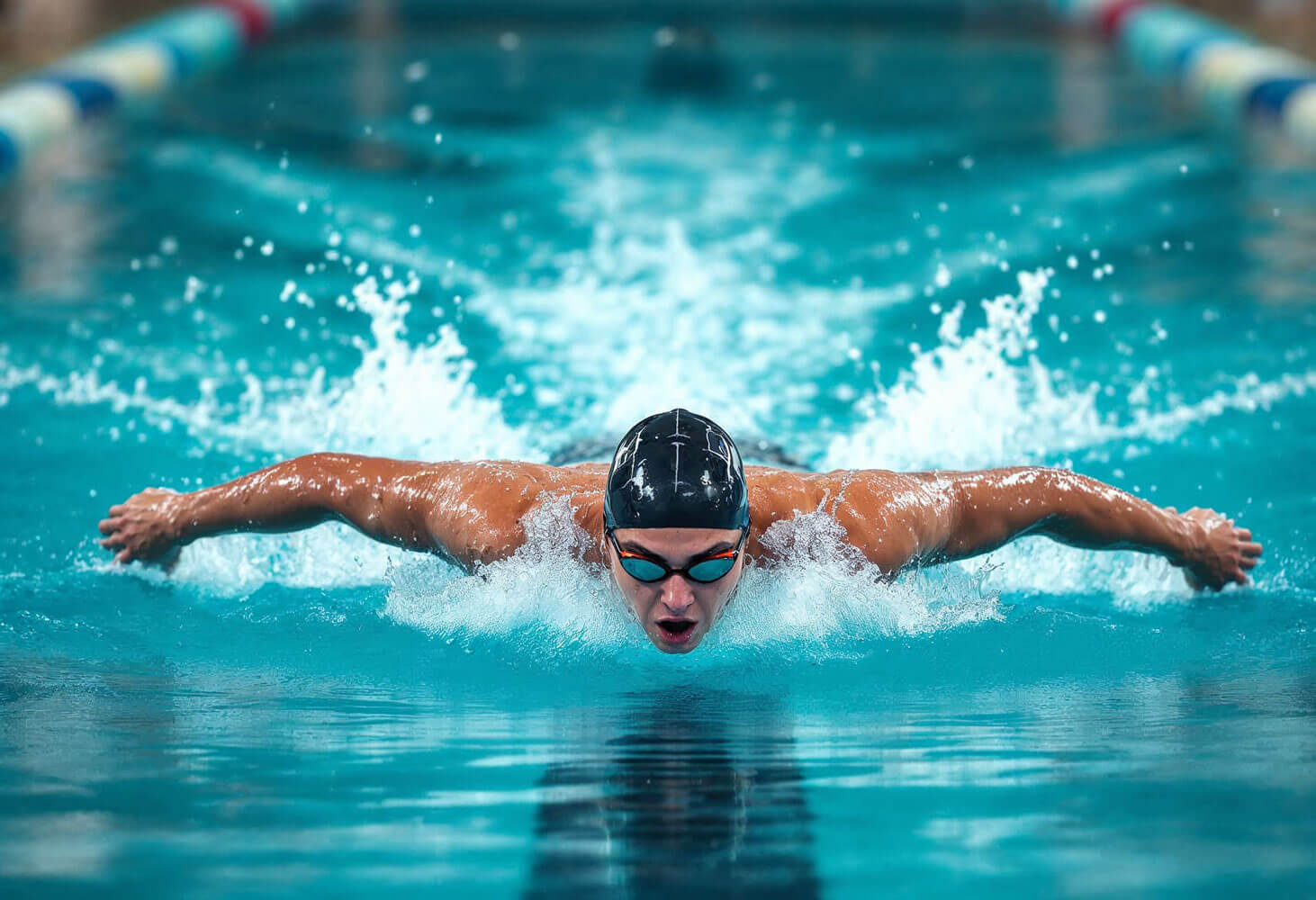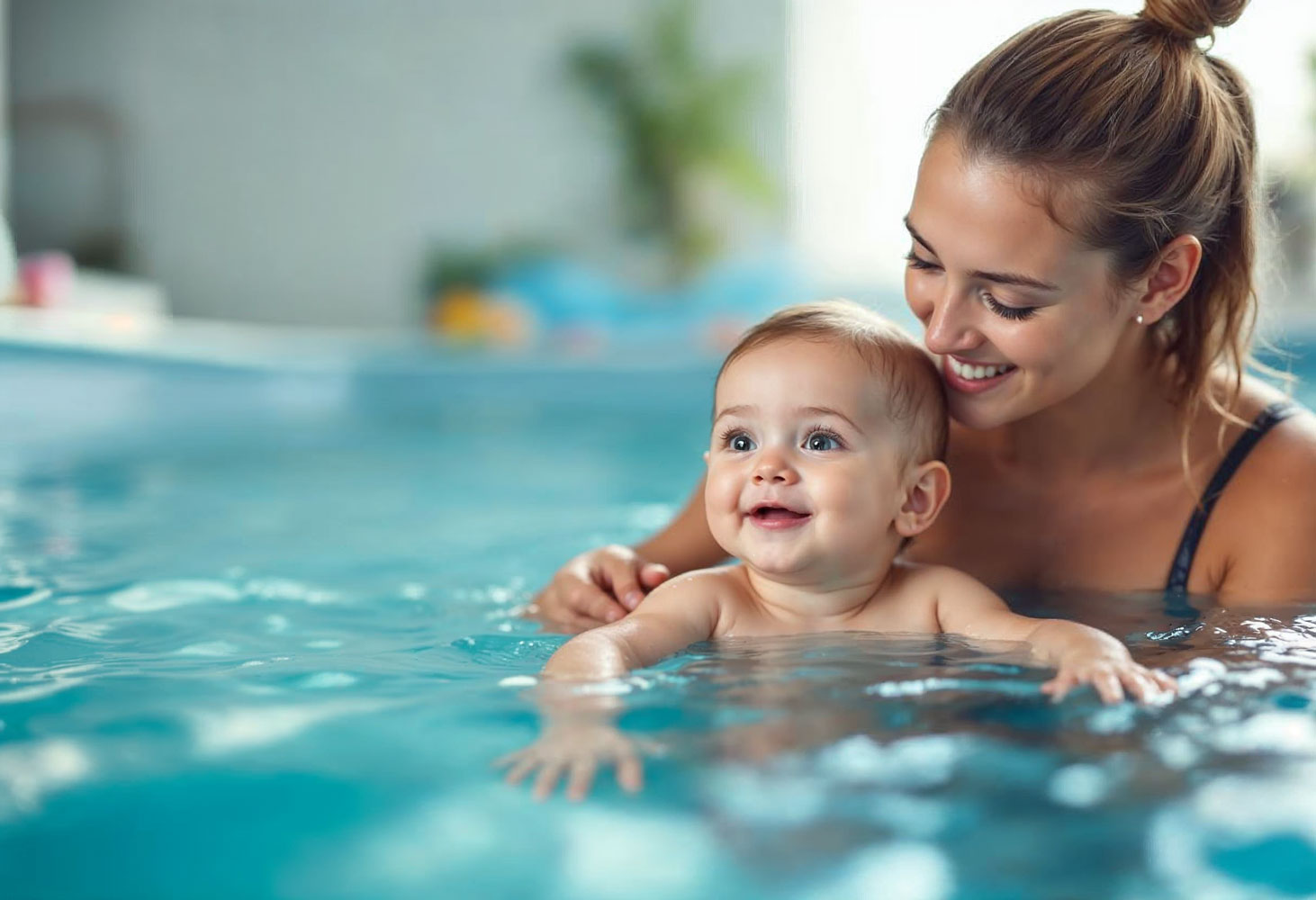Swimming is an essential life skill, but swimming for beginners can be challenging due to common mistakes that slow progress and affect confidence. At Piranha, we understand that mastering proper techniques early on is key to becoming a strong swimmer. From incorrect breathing to poor body positioning, these errors can reduce efficiency and cause fatigue.
In this guide, we highlight the most frequent mistakes in swimming for beginners and provide expert tips to help you improve your technique, build confidence, and enjoy a smoother swimming experience.
–
Ready to help your child gain confidence in the water? Whether they’re just starting out or looking to refine their technique, Piranha Swim Team offers expert coaching tailored to every skill level. Book swimming lessons for beginners today and give them the best start in their swimming journey!
Improper Breathing Techniques and How to Fix Them
Proper breathing is crucial for swimming efficiency and endurance. Many beginners struggle with improper techniques, leading to fatigue and poor performance in the water. Below are some common breathing mistakes and ways to correct them to improve swimming for beginners:
Common Breathing Mistakes Beginners Make
Holding Your Breath: Exhale continuously underwater instead of holding your breath.
Gasping for Air: Inhale naturally, don’t gulp air forcefully.
Lifting Head Too High: Keep one eye in the water while turning your head to breathe.
Inconsistent Breathing: Maintain a steady rhythm, breathing every 2–3 strokes.
How to Master Rhythmic Breathing in Swimming
Developing rhythmic breathing takes practice, both in and out of the water. A great starting point for swimming for beginners is dryland breathing exercises, where swimmers practice inhaling through the mouth and exhaling through the nose while mimicking swimming movements. This helps build muscle memory before entering the pool.
For freestyle swimmers, bilateral breathing (switching sides every three strokes) helps maintain balance and prevents over-reliance on one side. Beginners can start by breathing every two strokes and gradually work up to three or five strokes per breath for better endurance. With consistent practice, rhythmic breathing enhances efficiency in swimming for beginners, improving overall swimming performance.
Breathing Exercises to Improve Lung Capacity and Endurance
Strong lung capacity allows swimmers to sustain longer distances without feeling breathless. Incorporating these exercises can help:
Diaphragmatic Breathing: Inhale deeply through the nose, allowing the belly to expand, then exhale slowly. This strengthens the diaphragm and improves oxygen efficiency.
Pursed-Lip Breathing: Inhale for three seconds, then exhale slowly through pursed lips, extending the breath for better control.
Breath-Hold Training: Take a deep breath, exhale fully, and time how long you can hold your breath. Gradually increasing this duration improves lung capacity.
Common Stroke Mistakes and How to Improve Them
Why Overreaching or Short Strokes Can Slow You Down
Overreaching: Extending the arm too far disrupts balance and weakens propulsion. Instead, enter the water with a slightly bent elbow and engage the forearm early.
Short Strokes: Cutting strokes too soon reduces thrust. Ensure full extension and a strong pull through the water.
Fix: Keep strokes long but controlled, maintain a high elbow catch, and engage the forearm for better propulsion.
How to Improve Coordination Between Arms and Legs
Proper synchronization between arms and legs is essential for smooth, efficient swimming. Poor coordination can cause imbalance, wasted energy, and slower speeds. Here’s how to fix it:
Freestyle & Backstroke: Maintain a steady flutter kick that complements arm strokes without overkicking. Your legs should provide support, not excessive propulsion.
Breaststroke: Follow the correct sequence—pull, breathe, kick, and glide. Avoid kicking too early or pulling too late, as this disrupts momentum.
Butterfly: Use a two-kick cycle per arm pull—one kick for propulsion and the second for balance.
Simple Drills to Perfect Your Stroke Technique
Catch-Up Drill (Freestyle) – Keep one arm extended forward while the other completes a stroke before switching. Improves stroke timing and balance.
Finger Drag Drill – Drag fingertips along the water’s surface during recovery to maintain high elbows and improve stroke efficiency.
One-Arm Drill – Swim using only one arm while keeping the other at your side. Enhances stroke control and breathing technique.
The Importance of Warm-Ups and Cool-Downs in Swimming
Warm-ups and cool-downs are essential for any swimmer. They prepare the body for movement, reduce the risk of injury, and promote faster recovery. Skipping them can lead to muscle stiffness, poor performance, and increased injury risk.
Why Warm-Ups Are Crucial for Injury Prevention
A proper warm-up gradually increases heart rate, blood flow, and muscle flexibility, helping swimmers ease into movement. In swimming for beginners, warming up is particularly crucial because cold muscles are more prone to injury, especially during high-intensity swimming sessions. A good warm-up can also improve stroke efficiency and breathing control, setting the stage for a smoother swim.
Effective Warm-Up Routine:
Light Cardio (5 min): Jogging or arm swings to raise heart rate.
Dynamic Stretches (5-10 min): Arm circles, leg swings, and torso twists to loosen joints.
Pre-Swim Drills (5 min): Easy laps with gradual intensity, focusing on smooth strokes and breathing.
How Cool-Downs Aid in Muscle Recovery and Flexibility
Cool-downs are equally important in swimming for beginners, as they allow the body to transition from intense activity to a resting state. Slowing down gradually helps prevent muscle stiffness and promotes better recovery. Lowering the heart rate post-swim also reduces fatigue, ensuring swimmers feel refreshed rather than exhausted after a session.
Effective Cool-Down Routine:
Slow Swimming (5 min): Swim at a relaxed pace, focusing on long, smooth strokes.
Deep Breathing (2-3 min): Helps regulate oxygen flow and heart rate.
Static Stretching (5-10 min): Improves flexibility and prevents tightness.
Stretching Routines to Enhance Swimming Performance
Stretching increases flexibility, improves stroke range, and prevents injuries. Incorporating both dynamic stretches (before swimming) and static stretches (after swimming) optimizes performance.
Key Stretches for Swimmers:
Arm Circles & Shoulder Rolls – Loosens shoulder joints for better stroke motion.
Torso Twists – Enhances rotation for freestyle and backstroke.
Quadriceps & Hamstring Stretches – Improves leg flexibility for kicks.








